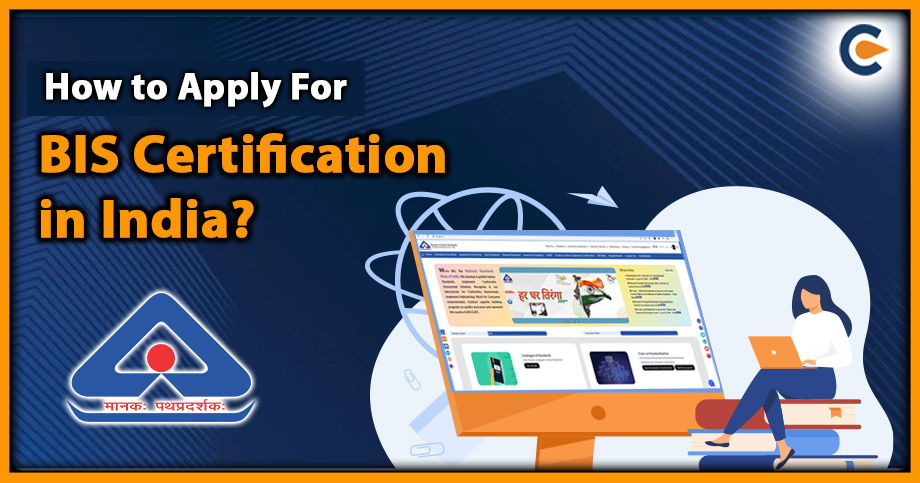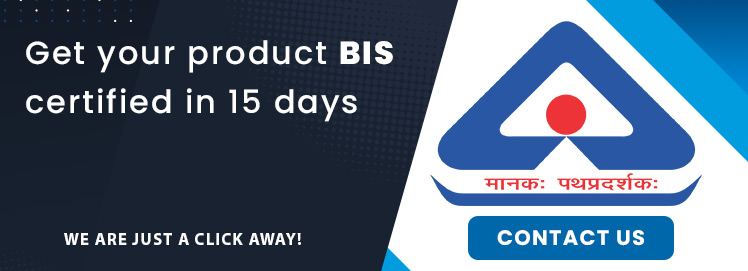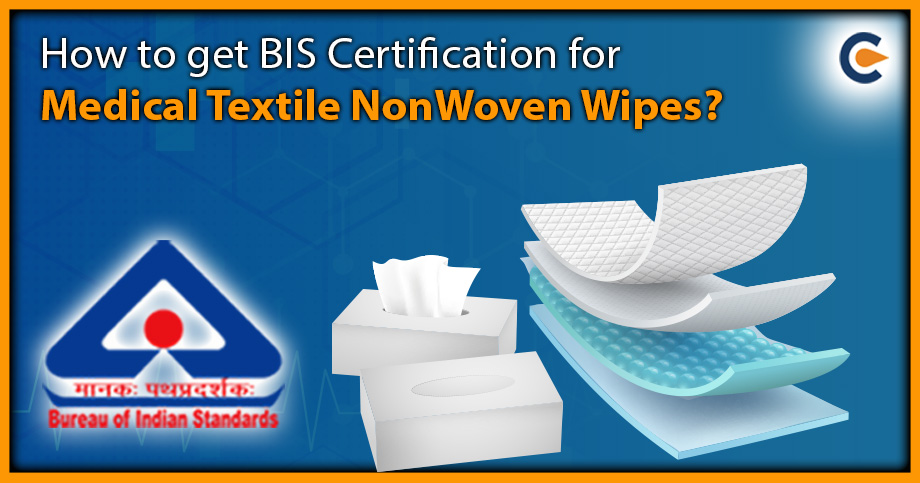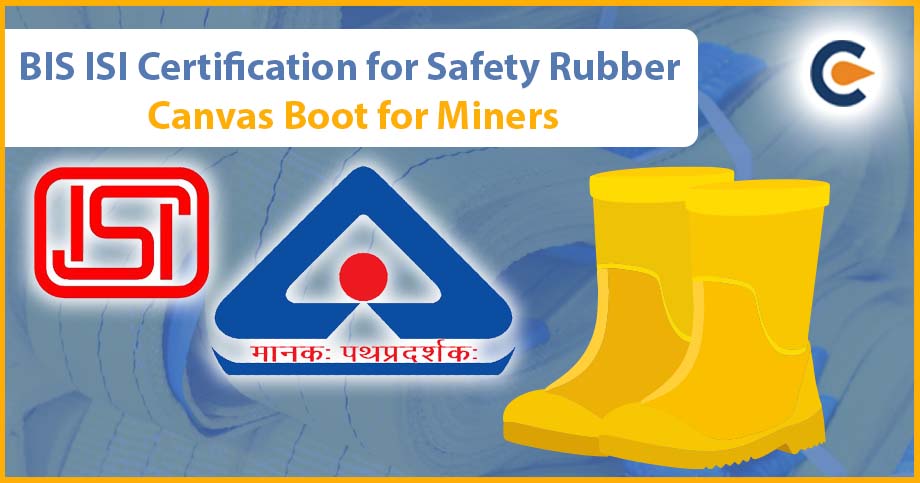To create quality standards for priceless items like gold and silver, the Bureau of Indian Standards (BIS) was established on December 23rd, 1986. Since then, the BIS has published notifications of its standards for numerous commercial and consumer goods. Indian customers have a high level of recognition for the BIS mark. The benefits of BIS certification in India to the national economy’s tangibility and traceability are numerous. Have you heard of it? The Department of Consumer Affairs’ Bureau of Indian Standards is India’s National Standard Body. Scroll down to check more about BIS Certification in India.
How Can I Obtain A BIS Certification In India?
One of the most well-known standards in India, the BIS certification in India is given out by the Bureau of Indian Standards (BIS), which covers more than 900 goods. You may spot the BIS certification on a product by looking for the ISI (Indian Standard Institution) mark on any durable products. Additionally, the BIS Hallmark was created for jewels like gold and silver to guarantee quality. It is also crucial to note that BIS and ISO have a Memorandum of Understanding (MOU) that enables Indian manufacturers to export their goods to foreign markets after receiving BIS (Bureau of Indian Standards) certification, similar to how ISI does.
Different Sorts of BIS Certification Schemes
The Compulsory Registration Scheme (CRS) list of electronic goods producers submits applications for BIS certification. The several BIS certification programmes listed below are available to manufacturers:
Registration for the ISI Mark Scheme for Domestic Manufacturers
The approval process for certifications takes close to 4 months. Domestic manufacturers must submit an application to the BIS official[1] website together with the relevant paperwork and payments in order to receive this certification. The BIS officers will conduct a factory inspection following the submission of the application.
To check the product’s quality, the inspector will take samples. The samples will then be evaluated in the BIS lab, and if they pass the required standards after careful evaluation, the BIS certificate will be issued.
Registration for Domestic Manufacturers Using Simplified Process
It is one of the simplest ways to have your goods BIS certified. You will need to submit samples of your products for testing at BIS-approved labs in order to obtain the licence. When the sample satisfies the required standards, submit an application for a grant of certification to BIS together with the necessary paperwork and costs. Following regular paperwork, a BIS officer will visit the factory for an inspection and, if the officer is satisfied, the BIS certificate will be applied. According to this plan, the licence must be issued within 30 days following the application.
Tatkal Plan
The Tatkal scheme is for manufacturers who must first obtain a BIS licence in order to begin the manufacturing process. The application for this category of BIS licence must be approved by the government within a rigorous 30-day window. Additionally, the applicant will be given priority on regular papers for quick application processing.
ECO Marking System
Products with the ECO mark BIS licensing adhere to the exacting standards of Indian standards. A mark of eco-friendly products is required for the supplementary licence for a product. The ECO emblem and mark demonstrate that the product complies with pertinent BIS standards and special environmental requirements. These products are given a single mark that combines the ECO logo and the ISI mark.
The process for acquiring a BIS certification in India under the ECO mark programme is comparable to the process for domestic firms to obtain a BIS licence under the regular and streamlined registration process. The management must submit a separate request to the BIS when a company currently has a valid BIS certification mark for an existing product and wishes to obtain a new product covered by the ECO mark scheme. To issue the BIS certification under the ECO mark scheme, the BIS must complete the steps that are specified.
Scheme for Foreign Manufacturer Certification
According to this plan, foreign producers can utilise ISI marks on their products for Indian consumers with the BIS certification. The approval procedure for applications typically takes six months. Under the Foreign Manufacturers Certification Scheme (FMCS), the BIS issues a BIS certification to foreign applicants or manufacturers within six months. In order to allow international applicants to receive and use the ISI mark on their products, the FMCS system was initially created in 2000. All products can receive certification under this program, with the exception of the MeitY-notified electronics and IT equipment. The Foreign Manufacturers Certification Department, which is housed at the BIS headquarters in New Delhi, is responsible for issuing licences under FMCS.
Marks of Certification Developed by BIS
In India, different certification marks are applied to items, and these marks are governed by parliamentary acts. One such organisation that has authorised the use of certification marks on commercial and consumer goods is the Bureau of Indian Standard. Some of them are as follows:
BIS Hallmark
For gold and silver jewellery sold in India, the BIS hallmark is a technique for verifying the purity of the metals used in the item. It attests that the jewellery complies with the National Standard Body of India’s BIS criteria.
The standard was initially introduced in April 2000 to verify the gold jewellery’s purity. The BIS establishes IS 1417, IS 1418, and IS 2790 as the worldwide standards for gold alloy.
With a few exceptions, this standard will be required starting on January 15, 2021, for gold jewellery sold in India. The Consumer Protection Act and other laws hold any seller who does not sell gold with a BIS hallmark accountable.
The BIS Hallmark On Gold Jewellery Has The Following Elements:
- BIS brand logo.
- The purity of gold is either 22K916, which equals 22 carats, 18K750, which equals 18 carats, or 14K585, which equals 14 carats.
- The assaying centre’s logo.
- Icon or code for the jewellers.
ISI Mark
The ISI mark, which stands for Indian Standards Institute, is applied to industrial goods to attest to their consumer-facing safety and purity. In India, certain goods must bear the ISI mark in order to be certified. Many products, including steel, car tires, LPG, and other items, can be easily identified by the ISI mark. The products listed below must all bear the ISI mark in order to be sold in stores.
- Digital switches.
- Electric engines.
- Cables for electrical wiring.
- Heaters.
- Cooking appliances, such as stoves.
- Cement.
- Valve for LPG.
- LPG containers.
- Tyres for automobiles, etc.
Eco Mark
The logo was unveiled in the start of 1991 to raise customer awareness of environmentally friendly products. The Indian government subsequently published a lengthy list of 17 product categories that are eligible for the marking programme:
- Detergents and soaps
- Paper
- Food products
- Lubricant liquids
- Packing supplies
- Powder coatings and architectural paints
- Batteries
- Electronics and electrical products
- Additions in food
- Alternatives for wood
- Cosmetics
- Propellants and aerosols
- Goods made of plastic
- Textiles
- Fire-extinguisher
- Leather
- Products made from coir
Advantages of BIS Certification in India
The following are the principal advantages of BIS certification in India:
- It aids in total quality management, or TQM, of the products.
- It unlocks the doors to widespread recognition and gives domestic producers access to the untapped international market.
- It is reliable proof of the high calibre of the goods.
- Enables management to set up a unique quality management system.
- Assists the company in building its reputation over time.
- It makes sure that resources are used effectively.
- It enables the company to eliminate overhead costs associated with producing the finished goods.
Purposes of BIS Certification in India
Following are a few of BIS’s primary goals:
- To create standards, certify products’ quality, and brand items, services, systems, and processes continually.
- To create a seamless national strategy for standard recognition and synchronising it with product development and export.
- Should place the appropriate emphasis on standardisation and quality control.
Products with Mandatory Certification
You should be aware that BIS certification is entirely optional. To preserve the health of people, plants, and animals, the public interest, environmental safety, national security, and the avoidance of unfair trade practices, the Central Government has made getting BIS certification mandatory for some items. Through the issuance of Quality Control Orders (QCOs), the Central Government has mandated the use of the Standard Mark for these items under a licence or Certificate of Conformity (CoC) from BIS.
Product Categories Covered By Scheme I (ISI Mark Scheme)
- Cement (of any kind, produced or purchased in India).
- Electrifying household goods
- Batteries
- Food and Products Related To It
- Oil-pressurised stoves
- Accessories for vehicles
- Valves, regulators, and cylinders
- Medical supplies
- Iron and steel products
- Transformers for electricity
- Electrified motors
- Capacitors
- Textiles, fertilisers, polymers, and chemicals
- Kitchen utensils
- LPG-powered domestic water heaters
- Hermetic Compressor, temperature-sensing controls, and related parts for air conditioners.
- Direct Connected Static Alternating Current and Plugs and Socket-Outlets. Active Energy Payment Metres.
- Residential gas stoves that use LPG
- Glass Float Transparent
- A pressure cooker for the home
- Cables
- LPG rubber hose
- Aluminum Foil
- Toys without batteries
- Electrified toys
Product Categories Covered By Scheme II (Registration Scheme)
List of Electronics and IT Goods Notified by the Ministry of Electronics and Information Technology under the “Compulsory Registration Scheme” for Self Declaration of Conformity.
- (Video) Electronic games
- Laptop/Notebook/Tablets
- Plasma, LCD, and LED televisions with screens larger than 32 inches.
- Optical disc players with integrated amplifiers that have 200W or more of input power.
- The microwave oven.
- Video monitors and visual display units with screens 32 inches and larger.
- Plotters and printers.
- Scanners.
- Bluetooth keyboards.
- Answering machines for phones.
- Amplifiers that have an input power of 2000W or more.
- Systems for electronic music having an input power of 200W or more.
- Electronic Clocks Powered by Mains.
- the set-top box.
- Machine that automatically processes data.
- IT equipment power adapters.
- Power adapters for electronic devices like audio, video, and similar devices.
- UPS/Inverters with a 5k VA rating.
The Ministry of New and Renewable Energy has published a list of solar photovoltaic systems, devices, and components that are subject to a mandatory registration programme.
- Si wafer-based crystalline silicon terrestrial photovoltaic (PV) modules.
- Thin-Film (a-Si, CiGs, and CdTe) Terrestrial Photovoltaic (PV) Modules.
- Converters for power are used in photovoltaic systems.
- Photovoltaic inverters that are connected to utilities.
- Battery for storage.
Switchgear and control equipment for low voltage: Ministry of Heavy Industries and Public Enterprises notification.
- Circuit breakers are low-voltage switchgear and controlgear.
- Switches, disconnectors, switch disconnectors, and fuse – Combination units are examples of low-voltage switchgear and controlgear.
- Electromechanical contactors and motor starters are examples of low-voltage switchgear and controlgear.
- A.C. semiconductor motor controllers and starters are examples of low-voltage switchgear and controlgear.
- A.C. semiconductor motor controllers and contactors for non-motor loads are examples of low-voltage switchgear and controlgear.
Documents required for obtaining BIS Certification in India
The following records must be submitted with Form V in order to obtain BIS Certification in India:
- Name and Address Proof of Office (Memorandum of Articles, Certificate from the Registrar of Firms, Certificate from the Directorate of Industries, Certificate from the Industries Center, etc.).
- Name and Address Proof of Factory (Certificate from the Registrar of Firms, Certificate from the Directorate of Industries, Certificate from the Industries Center, Memorandum of Articles, or Valid Lease deed demonstrating the firm’s rightful occupancy of the premises, etc.).
- If necessary, a valid MSME certificate.
- Letter of authorization from authorised representative in case application, signed by someone other than the company CEO.
- Flowchart for the manufacturing process.
- List of manufacturing equipment.
- Whether any manufacturing process is contracted out.
- Consent to the outsourcing of the production process, if appropriate.
- List of testing equipment.
- Anything that involves testing outside of a factory.
- Valid certificates of calibration for testing apparatus.
- Reports of internal tests.
- Reports from a third-party laboratory that met Indian Standards.
Guidelines for Obtaining BIS Certification in India
Both online and offline methods are available for BIS certification applications. For applying in offline mode, please follow these instructions:
- Download the application form by going to the specific BIS portal.
- Complete the information completely and join the aforementioned files.
- Send the application and the attested supporting documents by mail to the BIS office.
- BIS representatives will start the customary evaluation procedure as soon as they receive your application.
- Following the required verification, BIS representatives will visit the location and produce a thorough report.
- Then BIS representatives come to your production plant to test samples. Depending on the items, the samples may be examined on-site or by BIS-certified labs.
- After the appropriate evaluation procedure, a thorough report is produced, and the applicant is then granted a BIS certificate.
BIS Certification’s Continuity and Renewal
The BIS Certification in India is valid for a period of two years. If the product and the required standards have not changed, the certification holder may renew the licence. A BIS certificate is good for one to five years after renewal, depending on the product.
Conclusion
The National Standard Body of India is the Bureau of Indian Standard, which has 20 more regional branches in addition to its New Delhi headquarters. Since its foundation, the BIS has created numerous standards for a range of goods and services, some of which are requirements for certification and others of which are recommendations. The actions listed above must be taken in order to obtain a BIS certification. But it’s not as simple as it seems. You may have observed that BIS certification calls for a physical inspection of the plant site, followed by a few formal paperwork processes that can be both time-consuming and expensive. However, the BIS certification has high consumer acceptance in India, thus the company wishes to have BIS certify their products in order to increase public acceptance.
Read Our Article: What Is BIS Certification In India?













